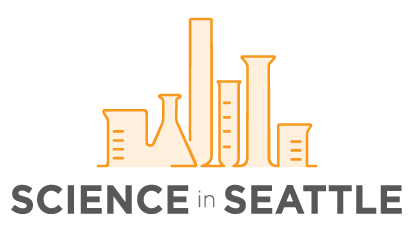This week we profile a recent publication in eLife from Dr. Pengyao Jiang (pictured, third from right) and the laboratory of Dr. Kelley Harris (second from left) at UW.
Can you provide a brief overview of your lab’s current research focus?
All organisms need to safeguard their DNA from damage and transmit it to new cells and new organisms without making too many copying mistakes, but there’s quite a bit of variation in the frequency of genetic changes that occur and which DNA sequences are mutated most often. We study how DNA transmission fidelity has been evolving within populations of humans and other species, using mathematical methods to analyze genetic variation data and disentangle signatures of changes to the mutational process from other types of evolutionary change. Mutagenesis seems to vary between individuals and populations and evolve surprisingly quickly for such a fundamentally important biological function, and we’re interested in exploring how this variation might be linked to variation in susceptibility to cancer and aging.
What is the significance of the findings in this publication?
In this work, led by Dr. Pengyao Jiang in collaboration with Prof. Maitreya Dunham, we used a combination of computational and experimental techniques to study the variation of DNA replication fidelity among different strains of the yeast Saccharomyces cerevisiae. The computational portion of the work is similar to previous work we’ve done in humans: it involves looking at genetic variants that have accumulated in different populations and identifying populations (such as humans from Europe or yeast involved in beer brewing) that have accumulated certain types of genetic changes at higher rates than other populations. In our previous human work, we hypothesized that this was due at least in part to “mutator alleles:” genetic variants that make some individuals transmit their DNA to offspring with fewer errors than individuals without these genetic variants, but we haven’t been able to prove it or identify what genes the mutator alleles might occur in. However, in this recently published yeast work, our computational analysis suggested that a certain type of beer-brewing yeast accumulates mutations from C to A more quickly than other yeast, and we were able to go one step further using laboratory experiments that aren’t possible in humans. We were able to validate that these mosaic beer yeast do mutate more quickly than other yeast, and we showed that the mutator phenotype is caused at least in part by genetic variation in the gene OGG1 that is involved in repairing DNA damage caused by oxygen free radicals. This is really exciting because it validates our hypothesis that mutator alleles have been shaping the accumulation of genetic variation in nature and because OGG1 is in the same pathway as certain genes linked to heritable cancer syndromes in humans. This suggests that if mutator alleles exist in humans as well, they might affect cancer risk as well as the transmission of DNA from generation to generation.
What are the next steps for this research?
We are working on a deeper analysis of the mosaic beer yeast to identify other mutator alleles that we think might be present in this lineage, and we’re also continuing to analyze other natural yeast strains to dig into possible signatures of other natural phenotypes that we saw in our computational analysis.
If you’d like us to mention your funding sources, please list them.
We are grateful for support from the NIH National Institute for General Medical Sciences, the Burroughs Wellcome Fund, the Kinship Foundation, the Pew Charitable Trusts, and the Alfred P. Sloan Foundation.
“>Read the Publication

